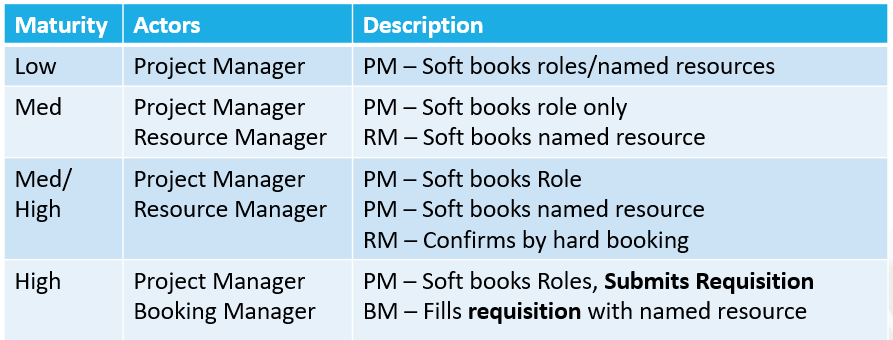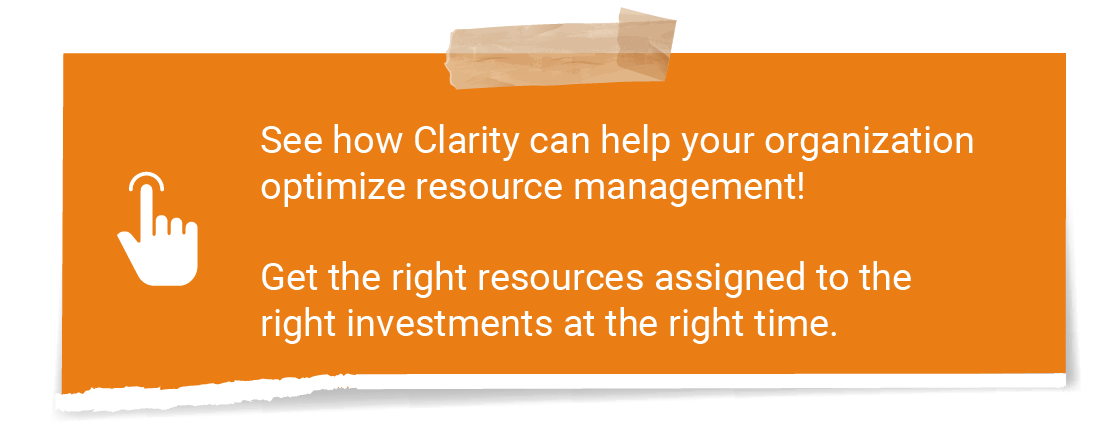by Clarity by Rego
Share

A resource manager is a professional who optimizes an organization’s resources – including staff, finances, timelines, technology, equipment, and physical space – to ensure efficient operations and successful initiative outcomes. They balance project demands with available resources so that projects are on time, within budget, and meet their organization’s overall objectives.

Resource Managers and the Resource Management Office (RMO)
Large organizations often have a Resource Management Office (RMO) with multiple members. Heading up the RMO is the Director of Resource Management, who works with Resource Management Analysts. (In this article, we will use the term, “resource managers.”)
Resource managers focus on ensuring resource data is reliable, collaborating with and advising project managers and other work managers, coaching people how to effectively use tools and understand processes, streamlining staffing requests, managing overallocations, and offering actionable insights to leadership.
In addition, resource managers are invaluable because they understand peoples’ personalities, strengths, weaknesses, and preferences in a way that tools and data sets alone cannot reveal. They know who will work well together, what barriers may exist, and the personal nuances required to staff projects and teams so that work is accomplished successfully.
Benefits of Resource Management for Your Organization
Effective resource management leads to higher productivity, lower costs, as well as better initiative and project outcomes. By allocating resources strategically, your organization can avoid delays, prevent employee burnout, and achieve your business goals with greater efficiency.

Resource Management Challenges: Signs That You Need a Resource Manager
Does your organization struggle with the following challenges? These “red flags” can indicate that your organization needs improved resource management.
Each of these challenges can be resolved by effective resource management and improved organizational processes. Let’s explore what a resource manager does.
What does a Resource Manager Do?
A resource manager ensures an organization’s resources are aligned with company goals, and effectively allocated, utilized, and optimized throughout project lifecycles. How do they do this? Working with other members of the RMO, they follow this general process.
1. Capacity Planning
- Review resource availability: Determine the overall availability of resources, considering factors such as current workloads, scheduled time off, and skills.
- Predict future resource needs: Anticipate the demand for resources based on strategic initiatives and upcoming projects.
- Offer insights beyond data: Understand individual and team abilities, characteristics, and preferences, to build effective teams and circumvent potential challenges.
2. Demand Forecasting
- Evaluate strategic initiatives and project requirements: Understand the resource needs for each upcoming initiative and project, and align with the organization’s overall goals.
- Collaborate with stakeholders: Engage with project managers, department heads, and leadership to assess timelines, skills needed, and initiative/project goals.
3. Resource Allocation
- Assign resources to initiatives and projects: Allocate staff to specific projects based on their skills, availability, and the needs of the project.
- Ensure alignment with initiative/project priorities: Make sure the most critical projects are adequately resourced.
- Optimize workload distribution: Balance workload to avoid underutilization or over-allocation of resources.
4. Resource Utilization Monitoring
- Track real-time resource usage: Monitor how effectively resources are being utilized and whether they are meeting initiatives/project needs.
- Identify and adjust bottlenecks: Detect inefficiencies, overutilization, or idle resources and adjust as needed.
- Report on resource utilization: Provide data-driven insights to leadership regarding how resources are being deployed and potential areas for improvement.
5. Communication and Collaboration
- Maintain clear communication: Keep open communication channels with stakeholders, providing visibility into resource allocation and usage.
- Manage resource conflicts: Address any resource conflicts or competing demands across teams, ensuring initiatives and projects remain on track.
6. Capacity and Budget Adjustments
- Make iterative adjustments: Based on real-time feedback, continuously adjust resource allocations to ensure optimal efficiency.
- Align resources with budget constraints: Ensure that resource allocation aligns with budget limits and forecasts, making necessary adjustments to stay within financial targets.
7. Reporting and Forecasting
- Provide strategic insights: Report on resource performance and utilization to stakeholders, ensuring alignment with long-term business objectives.
- Refine future planning: Use data and human insight from previous initiatives and projects to adapt resource forecasts and improve planning for future initiatives and projects.
Resource Manager vs. Project Manager
A common question is: What is the difference between a resource manager and a project manager? In short, their scope within an organization is different. These individuals often work closely together, but their focus and domain are distinct.
Project managers focus on one (or more) specific project details, timelines, and deliverables.
Resource managers oversee the allocation and utilization of company resources for multiple initiatives and/or projects across the entire organization.
You can use this chart to help determine a resourcing model that best fits your organization’s current maturity level.

Note: The higher the maturity level, the greater the impact on people and processes.
Resource Management is Essential for Business Success
Effective resource management can significantly impact time and cost savings for organizations. When resources are properly allocated, businesses can operate with maximum efficiency, minimizing downtime and avoiding project delays.
The following real-world examples demonstrate the importance of resource management, and how it can significantly impact business outcomes.
Resource Management Fail –
UPS: Overpromising and Underdelivering, Literally.
The holiday season of 2013 didn’t deliver sugar and spice and everything nice.

UPS unveiled a new shipping initiative, promising their customers that they would deliver all packages by December 24th, an essential date for Christmas gifts. Naturally, a massive number of people were delighted with the guarantee, and put their orders, packages, and hopes in the hands of UPS. Unfortunately, UPS failed basic resource management.
The problem was simple: UPS vastly underestimated the massive demand, and did not have the required resources available. Delivery teams were overwhelmed, and large amounts of packages arrived later than promised. Last minute attempts to hire thousands of additional workers, lease planes, and launch a second fleet of trucks were insufficient. According to Forbes, UPS stated, “Demand was higher than forecast.” Wow, that could certainly qualify as the understatement of the year!
The results of UPS’s failed resource management were painful:
So many lives – and wallets – were negatively impacted by poor resource management.
Resource Management Success –
Nonprofit Hospital System: A Lifeline in Uncertain Times
During the height of the 2020 pandemic, a large nonprofit hospital system and research organization faced significant challenges. With reduced staffing due to the pandemic, they still needed to keep critical operations running and complete essential, revenue-generating projects. However, they didn’t have the right processes or visibility in place to manage their limited resources effectively.

To address this, the hospital system implemented Clarity software, and developed new high-level resource management processes. Empowered with capacity planning transparency, they gained the visibility they needed to look at staffing more holistically. They were able to see where their resources were allocated, assess if staff were working on the right initiatives, and determine where staff should focus on more critical projects to keep the organization afloat.
Additionally, the organization’s leaders identified which resources were not charging time to the proper allocations, and reallocated them to more critical tasks. The organization also addressed overallocation issues by identifying programs that were unknowingly sharing resources. This enabled the organization to reprioritize, ensuring their limited staff focused on the most important projects that would keep operations running and help them navigate the challenges posed by the pandemic.
How They Successfully Utilized Resource Management:
 Despite the challenges, the organization’s newfound control over resource management ensured that they not only survived the pandemic’s impact – but thrived! They successfully completed vital revenue-generating projects, helping to secure their financial stability. With the right processes in place, they managed their resources effectively and decisively faced future challenges head-on.
Despite the challenges, the organization’s newfound control over resource management ensured that they not only survived the pandemic’s impact – but thrived! They successfully completed vital revenue-generating projects, helping to secure their financial stability. With the right processes in place, they managed their resources effectively and decisively faced future challenges head-on.
Today, they continue to effectively utilize resource management best practices. They confidently move forward with the right tools, data, and processes to ensure their continued success.
Strategies for Successful Resource Management
As demonstrated in the real-world examples, resource management can make or break an organization. So, what best practice strategies and techniques contribute to success?
Expert RMO and resource managers utilize the following methods to ensure the success of strategic initiatives and projects, while enhancing organizational efficiency. Each method provides a way to optimize resource usage, reduce waste, and maintain a balanced workload across teams. These strategies can also overcome bottlenecks in processes and workload management.
Effective Communication
Strategic Project Prioritization
Resource Allocation
Capacity Planning
Iterative Resource Monitoring
and Adjustments
Advanced Planning /
Resource Management Tools
Let’s explore how your organization can utilize each of these strategies.
Effective Communication Strategies
All successful resource management relies heavily on effective communication and collaboration between project managers, team members, leadership, and additional stakeholders.

Resource managers can boost and maintain effective communication with these techniques:
Strategic Project Prioritization Techniques
Strategic project prioritization helps resource managers get their organization focused on the most impactful initiatives and projects, ensuring that resources are allocated efficiently, deadlines are met, and business goals are aligned with overall strategy. The following techniques can be employed:
- Strategic alignment: Align projects with organizational goals to prioritize those contributing most significantly to business objectives.
- Impact assessment: Evaluate the potential impact of each project on the organization, prioritizing high impact projects.
- Resource availability: Consider the current availability of resources, allocating them first to projects that are under-resourced but critical.
Resource Allocation Techniques
To optimize workload distribution, a successful resource manager will utilize these resource allocation methods:
- Resource leveling: Adjust project timelines to balance the demand for resources, ensuring no single resource is overburdened.
- Resource smoothing: Distribute work evenly without altering project deadlines, maintaining consistent workload distribution.
- Time tracking: Monitor the time spent on tasks to ensure efficient use of resources and timely project delivery.
Capacity Planning Techniques
Capacity planning helps match the availability of resources with project demands. The following methods can be employed to balance available resources against project demands to avoid over- or underutilization:
- Forecasting: Predict future resource needs based on current and upcoming projects.
- Resource utilization tracking: Measure how effectively resources are used across projects, adjusting allocations as necessary.
- Scenario analysis: Evaluate different scenarios to plan for potential changes in resource availability or project requirements.
Iterative Resource Monitoring and Adjustment Techniques
Continuous resource monitoring and adjustment by a resource manager helps an organization consistently optimize resource allocation. This ensures resource efficiency and adaptability to meet project demands, leading to better project outcomes and alignment with organizational objectives.
- Continuously track resource utilization to identify inefficiencies.
- Make real-time adjustments to resource allocation based on current project needs.
- Address potential bottlenecks promptly to keep projects on track.
- Adapt resource strategies to changing project demands, ensuring optimal use of available resources.
Utilize Advanced Planning / Resource Management Tools
Robust advanced planning tools offer comprehensive resource management solutions to streamline processes and improve outcomes. Additionally, these tools can empower organizations to track resources and pivot as needed. We’ll explore effective resource management tool attributes in the next section.
Tools and Software for Resource Management
Resource management is complex and dynamic. Resource managers need accurate and timely data. To succeed, powerful Advanced Planning / Resource Management tools can be an indispensable asset. The best advanced planning tools can unlock the full potential of a teams, boost business efficiency, and improve outcomes.
Benefits of a Resource Management Tool
Resource management tools offer real-time visibility into resource utilization, allowing resource managers to allocate the right people to the right tasks at the right time. Acting as a centralized platform, these tools store all project information—such as plans, schedules, and budgets—in one place, simplifying planning, organization, and communication. Resource managers can track strategic initiatives and project progress, spot risks, and optimize resources to ensure that work stays aligned with company goals. Features like dashboards and reporting enhance collaboration, making it easier to track progress and share updates.
These tools also help resource managers prioritize projects and anticipate demand by evaluating project status and forecasting capacity. Advanced features like what-if scenarios and scorecards empower resource managers to adjust resources quickly and see how changes might impact timelines, improving planning and prioritization. Additionally, these tools streamline workflows and optimize decision-making with real-time staffing insights, critical path tracking, and automated action item responses, ensuring that progress is transparent, teams remain aligned, and resources are used efficiently to keep projects on target and deliver results on time.
Let’s explore the specific benefits the best tools offer for improving efficiency, productivity, and overall project success.
Customizable Coordination: Tailor resource allocation to specific tasks, ensuring optimal use of staff across various projects.
Enhanced Collaboration: Utilize unified views to improve communication, accountability, and accurate planning across teams.
Rapid Adaptation: Evaluate project status and dependencies in real-time, allowing for swift adjustments as plans evolve.
Real-Time Optimization: Gain full visibility into staff utilization, identify over- or underutilization, and assign the right people to the right tasks.
Flexible Allocations: Assign the right people with the right skills every time, managing workloads by percentage and scheduling staff only when needed.
Capacity and Demand Management: Achieve 360-degree visibility into resource availability, accounting for PTO, holidays, and differences between full- and part-time employees.
Timesheets: Track time and resources allocated to projects to inform planning and reporting to executives.
Dashboards: Monitor project progress and specific resources in real-time with customizable views that can be shared across users for easy collaboration.
Reporting: Use pre-built or customized reports to track project progress, identify roadblocks, and eliminate manual work, keeping everyone informed.
Scenario Planning: Build what-if scenarios to see how changes in resources affect timelines and results, enhancing decision-making.
Scorecards: Rank projects based on organizational priorities and analyze scores in your roadmap to improve prioritization decisions.
Tasks: Organize and prioritize work with views such as: list, grid, timeline, Kanban board, and/or Gantt chart.
Critical Path: Track cross-project dependencies and a project execution path that automatically updates as changes occur, keeping deliverables on schedule.
Action Item Responder: Simplify collaboration by allowing users to respond to workflows, timesheets, approvals, and more directly from email without logging in.
For additional considerations, review Resource Management.
The Future of Resource Management
Trends shaping the future landscape of resource management
- Increased adoption of resource management / RMO: More and more successful organizations are refocusing on resource management and the importance of having actionable resource data. This is due to several reasons, including challenges faced after partial adoption of Agile practices, mobility of talent after the COVID pandemic, concerns about critical staff burnout, and ultimately the need for visibility into who is working on what, when work is going to be done, and the cost.
- Digital transformation: Cloud-based platforms can enhance collaboration, provide real-time data insights, and prompt data-driven decision making. Integration of advanced technologies like AI and machine learning can optimize resource allocation.
- Employee engagement: An increased focus on creating a positive work environment to boost morale and productivity is directly connected to resource management. Additionally, there is a growing focus on remote work and distributed teams, making it crucial for resource management tools to have robust collaboration features and real-time updates to facilitate efficient coordination.
- Burnout prevention strategies: Resource management is increasingly implementing tools and practices to monitor and manage employee workload effectively.
Conclusion

Effective resource management is the backbone of successful project outcomes and overall business efficiency. Resource managers play a crucial role within the Resource Management Office (RMO), aligning the organization’s strategic initiatives and project needs with available resources, ensuring that every aspect of the project is supported by the right tools, people, and budget.
Without effective resource management, initiatives and projects can go terribly wrong, impacting the entire organization. By mastering key skills like communication, collaboration, and strategic planning, resource managers can optimize resource use, prevent bottlenecks, and contribute to achieving an organization’s strategic goals. Challenges to resource management can be overcome through a combination of resource management strategies and advanced resource management tools.
The benefits of strong resource management extend beyond simply meeting deadlines or staying within budget. It drives higher productivity, reduces costs, and enhances the quality of strategic initiatives and project outcomes, all while maintaining a balanced and motivated workforce.
Ultimately, the role of a resource manager is not just about operational efficiency, but it is a strategic position that plays an essential part in driving the success and sustainability of an organization. As trends like digital transformation and employee engagement shape the future, resource managers will remain pivotal in navigating the complexities of modern project environments, ensuring that organizations are well-equipped to achieve their long-term objectives.
FAQs (Frequently Asked Questions)
What is a resource manager?
A resource manager optimizes a company’s resources – including staff, finances, physical space, equipment, technology, and timelines – to ensure efficient operations and successful project delivery. They balance strategic initiatives and project demands with available resources to ensure efficient outcomes that meet their organization’s overall objectives.
What is an RMO?
An RMO refers to a Resource Management Office, which is a department or team within an organization that manages and optimizes the use of company resources. These resources can include staff, finances, physical space, equipment, technology, and timelines.
What does a resource manager do?
A resource manager’s primary roles include allocating and scheduling resources based on project needs. Resources include staff, finances, timelines, technology, equipment, and physical space. They collaborate with stakeholders to assess resource requirements, monitor utilization, and address potential bottlenecks. They ensure optimal resource use, reduce costs, and improve overall productivity and project outcomes.
What is the difference between a project manager and a resource manager?
In short, scope. Project managers focus on specific project details, timelines, and deliverables. Resource managers oversee the allocation and utilization of resources of multiple initiatives and projects across the organization.
How does effective resource management improve business outcomes?
Effective resource management leads to higher productivity, lower costs, as well as better initiative and project outcomes. By allocating resources strategically, organizations can avoid delays, prevent employee burnout, and achieve their business goals with greater efficiency.
What skills do resource managers need?
Essential skills for a Resource Manager include strong communication abilities, robust collaboration skills, strong organization skills, superb multitasking capabilities, and background or degree in business or project management.
What are resource management challenges?
Challenges in resource management include resource allocation issues, workload imbalances, communication gaps, budget constraints, and unpredictable changes.
How to overcome resource management challenges?
Solutions for effective resource allocation include effective communication, resource allocation, capacity planning, strategic project prioritization, iterative resource monitoring and adjustment, and the use of advanced planning / strategic management tools.
What do the best resource management tools do?
The best resource management tools offer real-time visibility into resource utilization, allowing teams to allocate the right people to the right tasks at the right time. They provide flexible allocation options, enhance collaboration through dashboards and reporting, and help organizations anticipate demand by forecasting capacity and planning for potential resource gaps. Additionally, they streamline workflows and decision-making with tools like what-if scenarios, scorecards, and automated processes, ensuring optimal use of resources and keeping projects on track.
What resource management tools are available?
There are several popular tools and software options available for resource management, such as Clarity by Rego. Clarity simplifies resource management, making it easy to unite teams and tackle the tasks that matter most.
What are trends in resource management?
Current trends in resource management include digital transformation and utilization of advanced technologies like AI and machine learning, which can automate repetitive tasks, streamline workflows, and provide valuable insights for better resource allocation. Additionally, there is increasing focus on enhanced employee engagement and burnout prevention strategies.
What are other titles for the role of resource manager?
Depending on the context and the specific industry or field they operate in, resource managers are also called resource management analysts, resource planners, project managers, asset managers or resource coordinators. As they progress in their careers, resource managers can take on senior roles like senior project managers, strategic planning managers or directors of resource management.
STAY IN THE LOOP
Get Notified of Updates.
Stay ahead of the curve by subscribing to our newsletter. Get the latest insights, strategies, and tools delivered straight to your inbox, and empower your business to achieve more.


